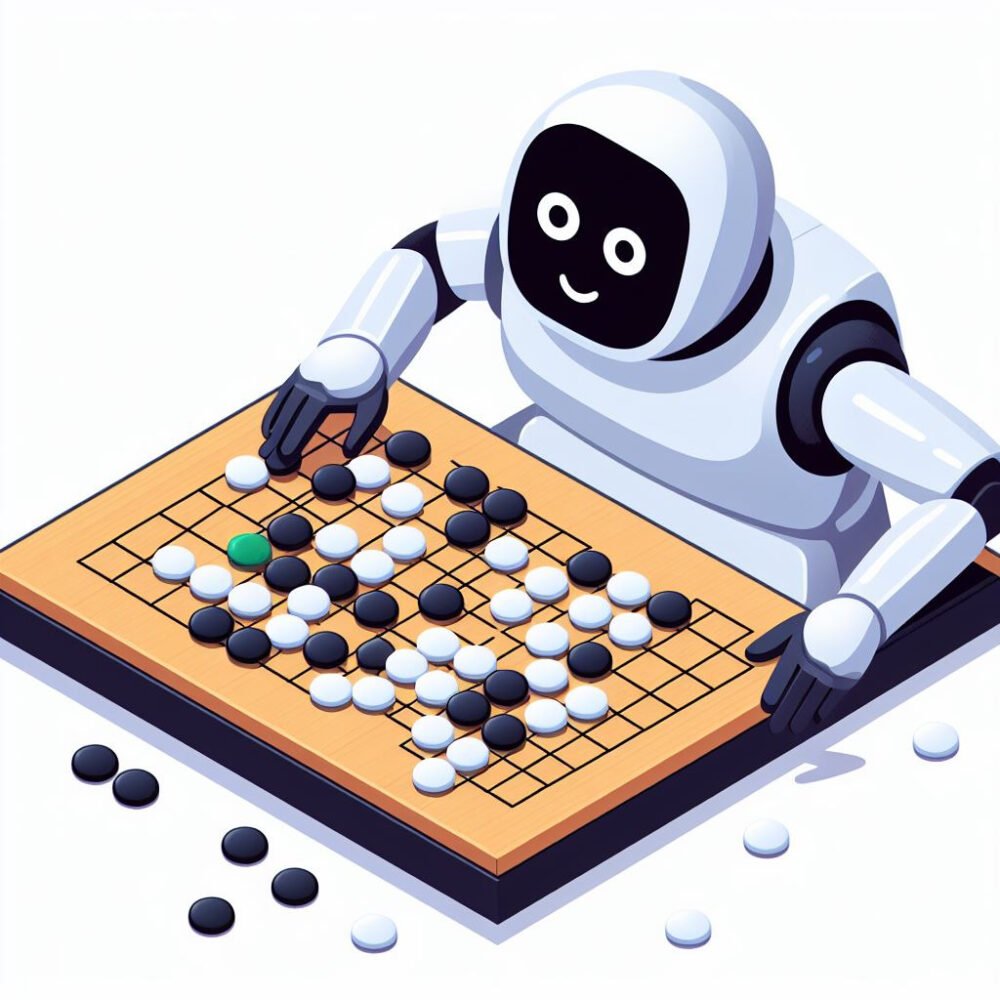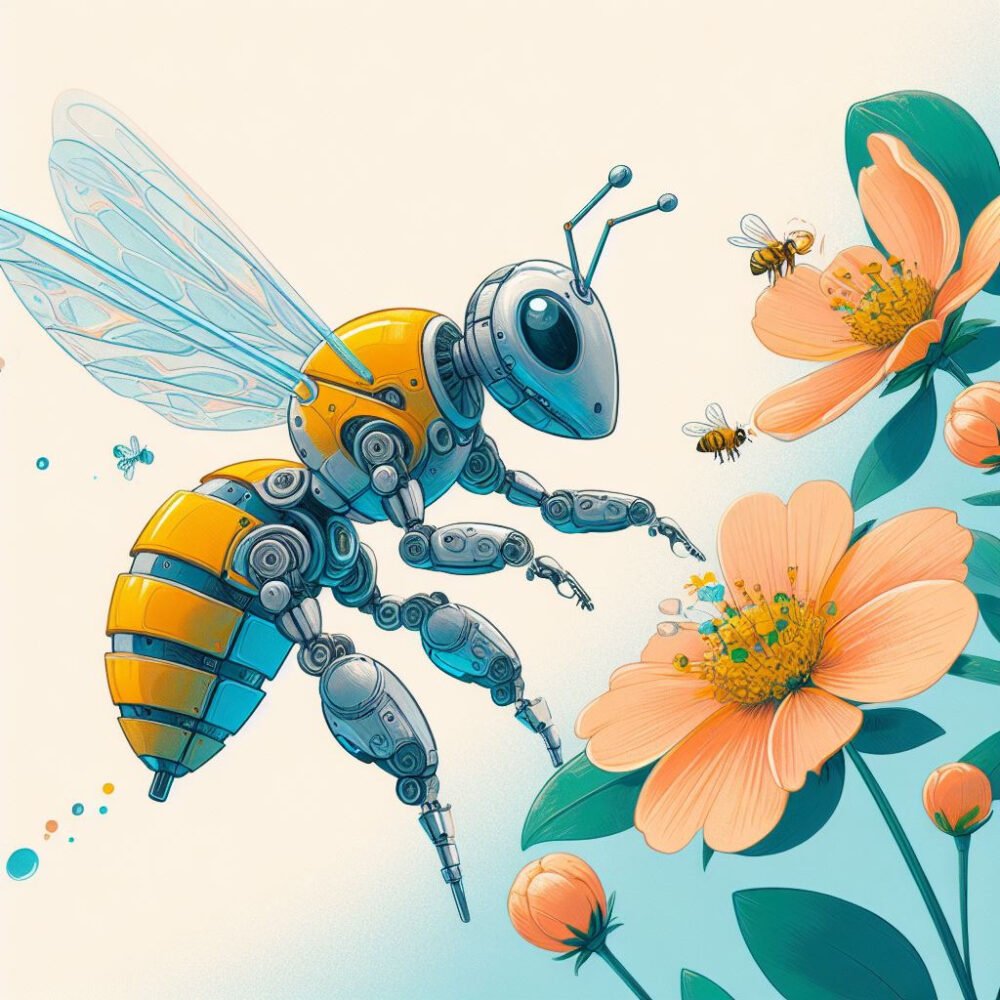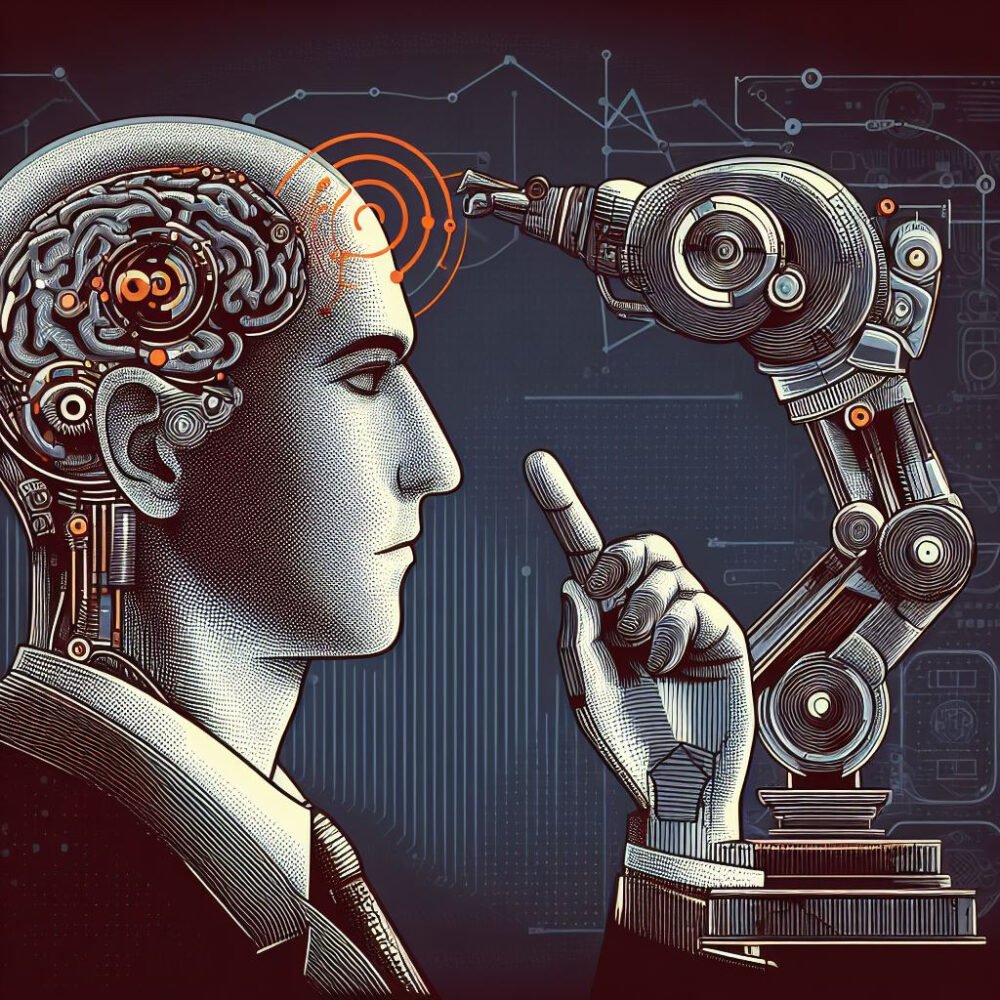Key Takeaways
- Artificial intelligence (AI) is the ability of a computer or a robot to perform tasks that normally require human intelligence, such as reasoning, learning, and decision making.
- AI robots are machines that combine AI with robotics, which is the science and engineering of designing, building, and operating robots.
- AI robots can perform various tasks across different domains, such as healthcare, agriculture, defense, and entertainment.
- AI robots face many challenges, such as computing power, trust, autonomy, and ethics.
- AI robots will improve our lives but pose some risks and dangers that must be addressed.
What Is Artificial Intelligence?
Artificial intelligence (AI) is a branch of computer science that aims to create machines or systems that can simulate human intelligence. Narrow AI and general AI are the two main types of AI.
The first type of AI, Narrow AI, is the type of AI that we encounter in our daily lives. it executes tasks such as playing chess, recognizing faces, or translating languages. Narrow AI can be very good at its specific task, but it cannot handle tasks outside its domain.
General AI is the type of AI that can perform any intellectual task that a human can do. It is also called artificial general intelligence (AGI) or strong AI. General AI does not exist yet, but it is the ultimate goal of many AI researchers.
What Is Robotics?
Robotics is the science and engineering of designing, building, and operating robots. A robot is a machine that can sense, act, and interact with its environment. Robots can be classified into different types based on their shape, size, function, or control.
Some common types of robots are:
- Industrial robots: Robots used in manufacturing, assembly, or packaging are typically stationary and perform repetitive tasks with high speed and accuracy.
- Service robots: These are robots that are used to provide services to humans or other machines. They can be either stationary or mobile. Examples of service robots are medical robots, agricultural robots, cleaning robots, or delivery robots.
- Social robots: These robots are designed to interact with humans. They are developed specifically for this purpose.ans or other social entities.. They can have human-like features or expressions to facilitate communication and empathy. Examples of social robots are humanoid robots, pet robots, or educational robots.
- Military robots: These are robots that are used for military purposes, such as reconnaissance, surveillance, combat, or rescue. They can be either autonomous or remotely controlled. Examples of military robots are drones, bomb disposal robots, or combat robots.
What Is an Artificial Intelligence Robot?

An artificial intelligence robot (AI robot) is a robot that combines AI with robotics. It is a machine that can not only sense and act on its environment but also learn from it and make decisions based on its goals and knowledge.
AI robots can perform various tasks across different domains, such as healthcare, agriculture, defense, and entertainment. Some examples of AI robots are:
- Sophia: Sophia is a humanoid robot that was created by Hanson Robotics in 2016. She has a realistic appearance and can express various emotions through her facial expressions and voice. She can also engage in natural conversations with humans and answer questions on various topics.
- Spot: Spot is a four-legged robot that was developed by Boston Dynamics in 2015. It can walk on different terrains and carry payloads up to 14 kg. It can also avoid obstacles and navigate autonomously using its cameras and sensors.
- AlphaGo: AlphaGo is a computer program that was developed by DeepMind in 2016. It uses deep learning and reinforcement learning to play the board game Go. It became famous for defeating Lee Sedol, one of the world’s best Go players, in a five-game match.
- RoboBee: RoboBee is a tiny flying robot that was created by Harvard University in 2013. It mimics the behavior of bees and can fly, hover, perch, and swarm. It helps with pollination, surveillance, or exploration.
What Are the Benefits of Artificial Intelligence Robots?

AI robots have the potential to improve our lives in many ways. Some of the benefits of AI robots are:
- They can perform tasks that are dangerous, difficult, or tedious for humans. For example, AI robots can help with disaster relief, bomb disposal, mining, or surgery. They can also work in harsh or hazardous environments, such as space, deep sea, or nuclear plants. By taking over these tasks, AI robots can reduce human risks and injuries, and increase efficiency and quality.
- They can enhance human capabilities and productivity. For example, AI robots can assist humans in various fields, such as education, health care, agriculture, or manufacturing. They can also augment human skills and intelligence, such as memory, creativity, or problem-solving. By collaborating with humans, AI robots can boost human performance and innovation.
- They can provide entertainment and companionship. For example, AI robots can offer fun and engaging activities, such as games, music, or art. They can also interact with humans in social and emotional ways, such as conversation, humor, or empathy. By entertaining and befriending humans, AI robots can enrich human experience and well-being.
- They can help solve some of the world’s biggest problems, such as climate change, poverty, or disease. For example, AI robots can monitor and protect the environment, such as wildlife, forests, or oceans. They can also deliver essential goods and services to remote or underserved areas, such as food, medicine, or education. By addressing these challenges, AI robots can contribute to global sustainability and development.
What Are the Challenges of Artificial Intelligence Robots?
Some of the challenges of AI robots are:
Computing Power and Energy Consumption
They require a lot of computing power and energy to function. AI robots need to process large amounts of data and perform complex calculations to achieve their tasks. This requires high-performance hardware and software, which can be expensive and difficult to maintain. AI robots also need a reliable and sufficient power source to operate, which can be challenging in remote or harsh environments. For example, Curiosity, the robotic rover that explores Mars, has a nuclear battery that can last for 14 years, but it can only travel about 200 meters per day1.
Trust and Transparency
Humans or other machines may not trust them because they are not transparent or accountable. AI robots often use black-box methods, such as deep learning, that are hard to explain or understand. This can make it difficult for humans or other machines to trust their decisions or actions, especially when they involve high-stakes or ethical issues. For example, Watson, the computer system that competes in Jeopardy!, can answer questions on various topics, but it cannot explain how it arrived at its answers2.
Autonomy and Adaptability
They may not be fully autonomous or adaptable to changing situations or goals. AI robots are usually designed for specific tasks or domains. They may not be able to handle situations that are outside their scope or expectations. AI robots may also depend on human guidance or intervention to achieve their goals or correct their errors. For example, Spot, the four-legged robot that can walk on different terrains, can avoid obstacles and navigate autonomously, but it still needs a human operator to control its speed and direction.
Ethics and Society
They may pose ethical, social, or legal issues, such as privacy, security, or responsibility. AI robots can collect and use personal or sensitive data from humans or other machines, which can raise privacy and security concerns. AI robots can also cause harm or damage to humans or other machines, intentionally or unintentionally, which can raise responsibility and liability issues. Saudi Arabia gave citizenship to Sophia, the humanoid robot who talks and feels emotions with humans. But her rights and duties as a citizen are unclear.
How to Learn More About Artificial Intelligence Robots?

If you’re curious about AI robots, I’d love to share some resources with you to help you learn more! Check out the following options:
- AI and robotics: How will robots help us in the future?: This is an article by Pieter Abbeel, a professor and AI researcher at UC Berkeley, that introduces some of the examples and applications of AI robots.
- Instant Evolution: AI Designs New Robot from Scratch in Seconds: This is a news report by Northwestern University that describes how an AI program can design new robots that work in the real world.
- Artificial Intelligence and Robotics: This is a video by Crash Course that explains the basics and history of AI and robotics.
- Artificial Intelligence Robot: What Is It and How Does It Work?: This is an internal link to this article that you are reading right now.
How Does an Artificial Intelligence Robot Work?
An AI robot works by combining three main components: sensing, reasoning, and acting. These components enable the AI robot to perceive its environment, process the information, and perform the appropriate actions.
Sensing
Sensing is the ability of an AI robot to collect data from its surroundings using various sensors, such as cameras, microphones, or touch sensors. The data can be in different forms, such as images, sounds, or signals. Computers convert data into a format that AI robot can understand, such as numbers, symbols, or vectors.
Reasoning
Reasoning is the ability of an AI robot to analyze the data and make decisions based on its goals and knowledge. The AI robot can use different methods of reasoning, such as logic, rules, or learning. Logic is the use of formal systems of symbols and rules to deduce valid conclusions from given premises. Rules are the use of predefined statements that specify the conditions and actions for a given situation. Learning is the use of data and feedback to improve the performance or behavior of the AI robot over time.
Acting
Acting is the ability of an AI robot to execute the actions that are determined by its reasoning. The actions can be physical or virtual, depending on the type and function of the AI robot. Physical actions are the movements or manipulations of the AI robot or its parts, such as walking, grasping, or speaking. Virtual actions are the outputs or communications of the AI robot or its systems, such as displaying, writing, or sending.
What Are Some Examples of Artificial Intelligence Robots?
Here are some AI robots that you can see or expect to see in the near future:
- RoboCup: RoboCup is an international competition that aims to promote research and education in AI and robotics through soccer games. The competition involves different categories of robots, such as humanoid robots, wheeled robots, or simulated robots.
- Curiosity: Curiosity is a robotic rover that was launched by NASA in 2011 to explore Mars. It has a variety of sensors and instruments that allow it to collect and analyze data about the Martian environment and geology. It also has a self-driving system that enables it to navigate autonomously on the surface of Mars.
- Watson: Watson is a computer system that was developed by IBM in 2010 to compete in the quiz show Jeopardy!. It uses natural language processing and machine learning to understand and answer questions on various topics. It also has a voice synthesizer that allows it to speak in a human-like voice.
- Pepper: Pepper is a humanoid robot that was created by SoftBank Robotics in 2014. It has a friendly appearance and can recognize human emotions and expressions. It can also interact with humans using speech, gestures, or touch. It accomplishes various purposes, such as customer service, education, or entertainment.
What Are Some Trends and Future Directions of Artificial Intelligence Robots?

Some of the trends and future directions of AI robots are:
Cloud robotics
Cloud robotics is the use of cloud computing and networking to enhance the capabilities and performance of robots. It allows robots to access large amounts of data and resources from remote servers and share information and skills with other robots. Some examples of cloud robotics are Cogniteam, a cloud robotics platform that provides low-code development, simulation, and management tools for ROS-based robots, AWS RoboMaker, a cloud service that enables robotics developers to run, scale, and automate simulation without managing any infrastructure, and CloudMinds, a cloud intelligent robot operator that provides professional robot operation services to various industries.
Swarm robotics
Swarm robotics is the study and design of systems that consist of many simple robots that cooperate to achieve a common goal. Natural phenomena like ant colonies, bee hives, or bird flocks inspire this type of AI robot. It helps with hard or impossible tasks for one robot, such as exploration, search and rescue, or surveillance. Some examples of swarm robotics are Wyss Institute, a research institute that develops programmable robot swarms for various applications, Swarmathon, a NASA-sponsored competition that challenges students to develop algorithms for swarms of small robots, and SwarmFarm Robotics, a company that provides autonomous agricultural solutions using swarms of robots.
Brain-computer interfaces
Brain-computer interfaces (BCIs) are devices that enable direct communication between the brain and a computer or a robot. They can be either invasive or non-invasive, depending on whether they require surgery or not. For example, they can control prosthetic limbs, restore sensory functions, or enhance cognitive abilities. Some examples of brain-computer interfaces are Neuralink, a company that develops implantable brain-computer interfaces for medical and human enhancement purposes, BNCI Horizon 2020, a project that aims to create a roadmap for the future of brain-computer interaction, and Microsoft Research, a research division that explores brain-computer interfaces for the general population.
Conclusion
Artificial intelligence robots are machines that combine AI with robotics. They can perform various tasks across different domains, such as healthcare, agriculture, defense, and entertainment. AI Robots have many benefits but also face many challenges. They are constantly evolving and improving as technology advances and new challenges arise.
We hope you enjoyed this article and learned something new about AI robots. If you want to learn more about AI and robotics, you can check out our website for more articles, videos, and resources. You can also subscribe to our newsletter to get updates on our latest content.
Thank you for reading!